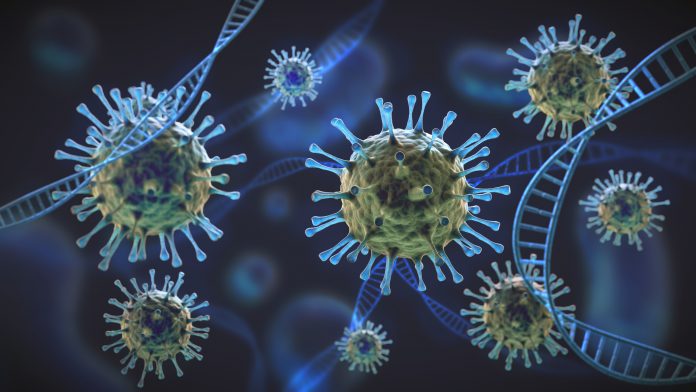
Antibodies against SARS-CoV-2 work better if they target two sites on the virus’s Spike protein, according to a new study led by scientists at La Jolla Institute for Immunology (LJI).
The new findings, published in Cell Reports, suggest bivalent antibodies retain efficacy against both early SARS-CoV-2 variants and later Omicron variants. Now scientists are looking at how to apply this insight in new antibody therapeutics and even more effective COVID-19 vaccines. Currently approved treatments for COVID-19, including antibodies, are listed here. Notably, the FDA has limited the use of antibody-based treatments to patients with variants that are likely to be susceptible to those drugs.
“The ideal antibodies exist. Now the question is, how do we preferentially boost those?” says Kathryn Hastie, PhD, director of the Antibody Discovery Center at LJI. Hastie led the new study alongside LJI postdoctoral researcher Heather Callaway, PhD, Sharon Schendel, PhD, and LJI president and CEO Erica Ollmann Saphire, PhD.
Current COVID-19 vaccines are designed to teach the body to recognize the SARS-CoV-2 Spike protein. Spike is important because it recognizes and latches onto host cells through a region called the receptor binding domain (RBD). Each spike has three copies of the RBD. An antibody that can bind an epitope on the RBD has a chance of stopping infection.
The problem is that SARS-CoV-2 keeps mutating, and many once-powerful antibodies can’t recognize their usual targets on RBDs of new variants. Building more effective vaccines and therapies requires determining what effective antibodies have in common.
Callaway and Hastie analyzed nearly 400 antibodies sent by scientists around the world to the Coronavirus Immunotherapy Consortium (CoVIC), which is headquartered at LJI. They narrowed down this huge pool and found 66 potent antibodies that could neutralize Omicron lineage BA.1 and early sub-lineages such as BA.1.1 and BA.2. By the time they tested antibodies against Omicron lineages BA.4/5, only seven antibodies had neutralizing power.
The most effective antibodies targeted the same spot as those that didn’t withstand the mutations in Omicron. To find out how this unique group of neutralizing antibodies was working so well, Callaway used an imaging technique called cryo-electron microscopy and biochemical analysis to see exactly how these antibodies bound to molecules in the RBD.
“It became clear there was a pattern,” says Callaway. “The successful antibodies overcome loss of affinity for Omicron by simultaneously binding two RBDs in the Spike.”
These antibodies didn’t bind their targets especially strongly, but by locking two adjacent RBDs at once, they made it harder for Omicron and other variants to escape.
Going forward, the researchers will continue to test the CoVIC pool of antibodies against new SARS-CoV-2 variants. This information will support development of better vaccines— that will elicit immunity that lasts multiple seasons of viral evolution. The Saphire Lab is also engineering immunogens that will retain broad activity through time.
“CoVIC demonstrated that collaboration allowing studies on a larger scale can lead to better insights,” Schendel adds.
Learning more about these antibodies can guide creation of next-generation antibody cocktails that are more resistant to ever-emerging SARS-CoV-2 variants.













